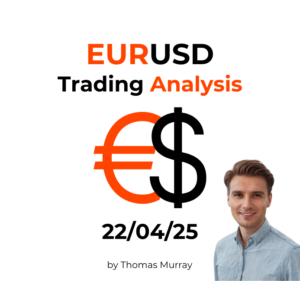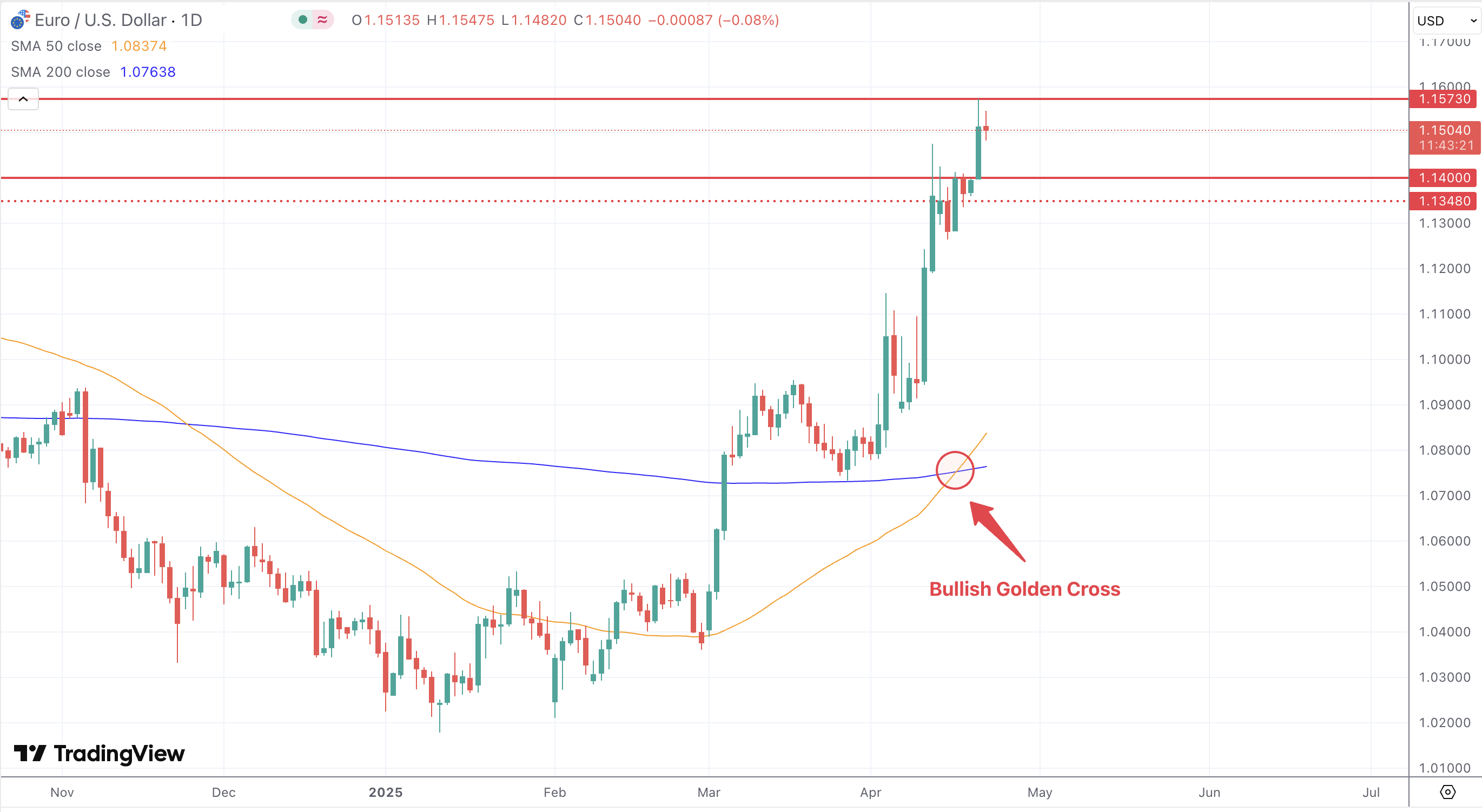Key Takeaways
- EUR/USD has reached a multi-year high near 1.1575, driven by USD weakness and geopolitical concerns.
- Technical indicators show overbought conditions, with RSI around 74 and the pair trading above the nine-day EMA.
- Resistance levels to watch are 1.1573 and 1.1830; support levels are 1.1400 and 1.1348.
- Market focus remains on US political developments, Fed independence, and upcoming economic data.
- The potential for ECB rate cuts in June adds uncertainty to the Euro’s outlook.
Market Dynamics and Recent Performance
As of April 22, 2025, the EUR/USD pair has climbed to a three-and-a-half-year high, reaching approximately 1.1575. This upward movement is primarily attributed to the weakening of the US Dollar, influenced by escalating concerns over the Federal Reserve’s independence. Statements from President Trump regarding the potential dismissal of Fed Chair Jerome Powell have intensified market apprehensions, leading to a decline in the USD’s credibility.
Simultaneously, the Euro has demonstrated resilience, even in the face of the European Central Bank’s (ECB) dovish stance. The ECB’s recent 25 basis point rate cut, while anticipated, did not significantly impact the Euro’s strength. Additionally, escalating trade tensions between the US and China have further pressured the USD, indirectly benefiting the Euro.
Technical and Fundamental Influences
EUR/USD remains in a solid uptrend, having broken decisively above 1.1500—a level now acting as fresh support. Price action is respecting an ascending channel that’s been in place since early February, with the upper boundary now pointing toward 1.1830.
A bullish Golden Cross just formed, with the 50-day SMA crossing above the 200-day SMA—an encouraging signal for medium-term buyers. Meanwhile, expanding Average True Range (ATR) suggests increasing volatility, reinforcing the strength of the breakout but also hinting at sharper pullbacks ahead.
Volume patterns also support the bullish case, with rising volumes on green days and weaker participation on retracements—classic trend-following behavior.
Fibonacci levels mapped from the January low (1.0224) to the recent high (1.1573) show likely pullback zones at 1.1255 and 1.1058, while upside extensions target 1.1650 and 1.1780.
On the fundamental side, the euro’s strength is less about ECB policy and more about a weaker dollar. Political noise in the U.S. and fears over Fed independence continue to weigh on the greenback, keeping the euro elevated for now.
Looking Forward
The EUR/USD pair’s direction in the coming week will likely be influenced by developments in US monetary policy and geopolitical tensions. Investors should closely monitor statements from US and ECB officials, as well as economic indicators such as US inflation data. While the current trend favors the Euro, overbought technical indicators suggest the possibility of a short-term correction.



